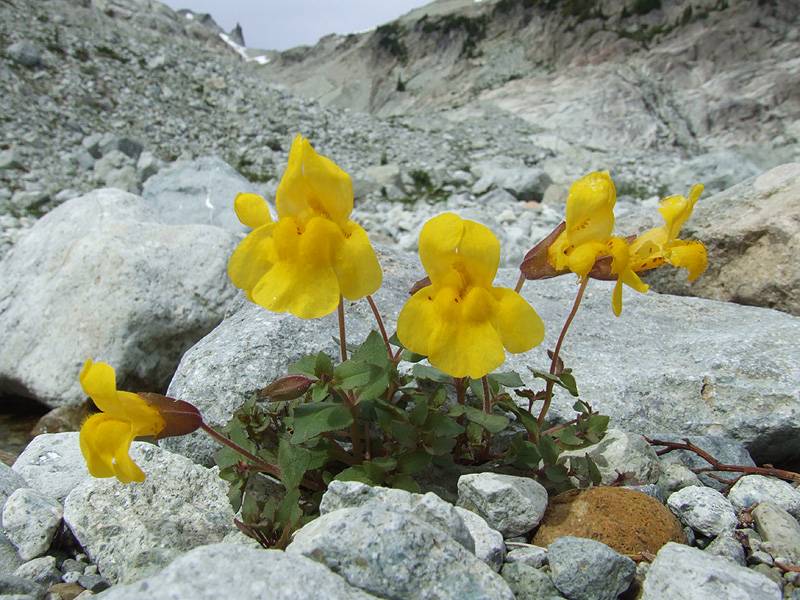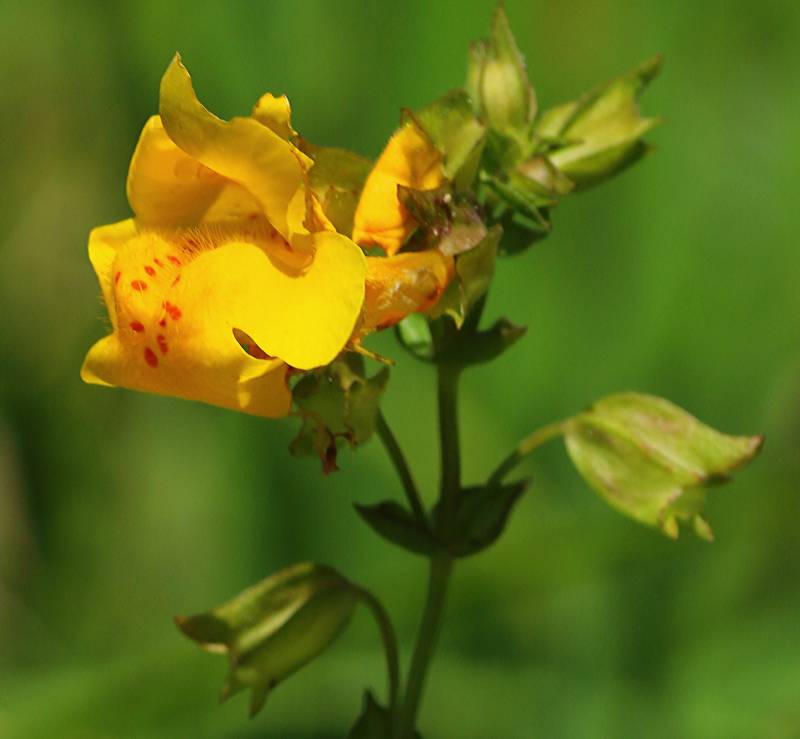Erythranthe tilingii
Erythranthe scouleri
Scouler's monkey-flower
Leaves opposite, mostly sessile, the blade under 2.5 cm. long, elliptic to ovate, slightly reduced upward, with a few irregular teeth, sub-palmately veined.
Leaves cauline, basal ones not typically persistent;
petioles 10-25 mm and gradually merging into blade, becoming sessile distally;
blade oblong-elliptic to oblong lanceolate, 25-60 mm long and 8-18 mm broad, palmate venation with 5-7 veins to nearly pinnate, base attenuate, margins evenly and shallowly toothed or scalloped with 10-20 teeth per side, apex acute to obtuse, surfaces glabrous.
Flowers few, solitary in the leaf axils, on long pedicels;
calyx 5-toothed, irregular, the upper tooth much the largest, the 2 lower ones tending to fold upward;
corolla large for the size of the plant, 2-4 cm. long, strongly bilabiate, with flaring throat, yellow with maroon dots or splotches on the pubescent lower lip;
stamens 4.
Axillary flowers 2-8, emerging distalmost nodes; fruiting pedicels 20-25 mm, glabrous;
calyx ovoid, inflated, compressed across sagittal plane, 13-14 mm, glabrous, throat closing;
corollas yellow with few or no reddish markings, symmetric bilaterally, bilabiate;
tube-throat funnel-shaped and 20-24 mm, protruding 10-15 mm beyond calyx margin;
limb expanded 2-30 mm;
styles prominently hirsute to villous;
anthers not protruding, glabrous.
Capsule.
Erythranthe tilingii
Erythranthe scouleri
- Local floras:
BC,
CA,
OR
- Local Web sites:
CalFlora,
CalPhotos,
Flora NW,
PNW Herbaria
WildflowerSearch
iNaturalist (observations)
- LBJ Wildflower Center
- SEINet
- Plants of the World Online
- Encyclopedia of Life
- Wikipedia
- Google Image Search
- Local floras:
BC,
OR,
WA
- Local Web sites:
Flora NW,
PNW Herbaria
WildflowerSearch
iNaturalist (observations)
- LBJ Wildflower Center
- SEINet
- Plants of the World Online
- Encyclopedia of Life
- Wikipedia
- Google Image Search



